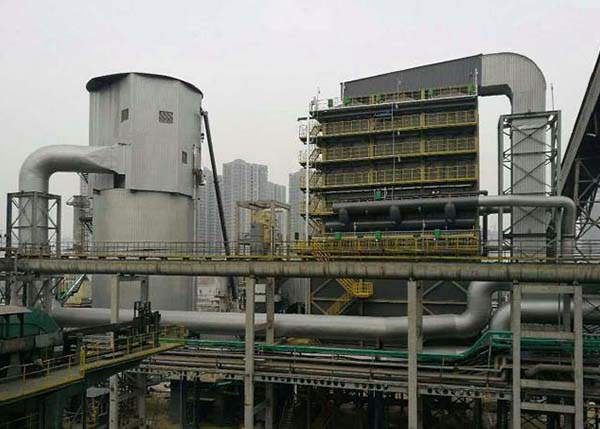Fangxin low-temperature denitration catalyst: What should be noted during the operation of Anhui denitration equipment
Publishdate:2023-02-27 Views:137
Introduction to Fangxin Low Temperature Denitration Catalysts With the increasingly strict environmental protection regulations in recent years, the emission standards for flue gas have also become stricter. The three policies of smoke, sulfur dioxide, and nitrogen oxides should strictly adhere to environmental standards. According to current environmental standards, the emission policy is: smoke and dust less than 30mg/m3, sulfur dioxide less than 200mg/m3, and nitrogen oxides less than 200mg/m3. Adopting SCR technology for external denitrification to reduce nitrogen oxides.

Secondly, according to the application of catalysts, denitrification technology can be divided into selective catalytic repair (SCR) and selective non catalytic repair (SNCR).
Selective catalytic repair (SCR) refers to the process where the temperature of the flue gas outside the furnace is between 300 and 420 ℃, and the catalyst, ammonia or urea, and smoke are mixed on the catalyst to reduce NOx in the smoke and achieve Mo's denitrification power. Over 80%. This method has a high denitrification power, but the corresponding work cost and pre injection cost are also high.
Selective Non catalytic Repair (SNCR) refers to the denitrification reaction temperature in the furnace, which is between 850-1100 ℃. Without a catalyst, ammonia or urea reflects smoke and dust at high temperatures, reducing NOx in the smoke and dust. The denitrification power is 30% -50%. This method has low denitrification power, simple initial investment and work, and low cost. Most of our country adopts SCR technology, which is mature and has good denitrification effects. Dachanggao also adopts SCR denitrification technology, which uses urea solution pyrolysis reflection denitrification.
Precautions for low-temperature denitrification catalyst equipment:
1) Calibrate the testing instruments in the denitrification testing room every month to ensure that the reflected values are the actual values
2) Calibrate ammonia escape monitoring equipment monthly to ensure that the ammonia escape standard value is the actual value. Regularly clean the filter screens of the conveying pump and transfer pump to ensure that the pipelines are unobstructed.
3) Check the spray gun of the denitrification equipment at least twice a day to see if it is blocked. If there is any blockage, immediately sort out the pipeline;
4) Inspect the sonic soot blower twice a month to check for air leaks in the trachea and ensure that the sonic soot blower is working properly. If there is any disorder, repair it immediately;
Introduction to Fangxin Low Temperature Denitration Catalysts With the increasingly strict environmental protection regulations in recent years, the emission standards for flue gas have also become stricter. The three policies of smoke, sulfur dioxide, and nitrogen oxides should strictly adhere to environmental standards. According to current environmental standards, the emission policy is: smoke and dust less than 30mg/m3, sulfur dioxide less than 200mg/m3, and nitrogen oxides less than 200mg/m3. Adopting SCR technology for external denitrification to reduce nitrogen oxides.

Secondly, according to the application of catalysts, denitrification technology can be divided into selective catalytic repair (SCR) and selective non catalytic repair (SNCR).
Selective catalytic repair (SCR) refers to the process where the temperature of the flue gas outside the furnace is between 300 and 420 ℃, and the catalyst, ammonia or urea, and smoke are mixed on the catalyst to reduce NOx in the smoke and achieve Mo's denitrification power. Over 80%. This method has a high denitrification power, but the corresponding work cost and pre injection cost are also high.
Selective Non catalytic Repair (SNCR) refers to the denitrification reaction temperature in the furnace, which is between 850-1100 ℃. Without a catalyst, ammonia or urea reflects smoke and dust at high temperatures, reducing NOx in the smoke and dust. The denitrification power is 30% -50%. This method has low denitrification power, simple initial investment and work, and low cost. Most of our country adopts SCR technology, which is mature and has good denitrification effects. Dachanggao also adopts SCR denitrification technology, which uses urea solution pyrolysis reflection denitrification.
Precautions for low-temperature denitrification catalyst equipment:
1) Calibrate the testing instruments in the denitrification testing room every month to ensure that the reflected values are the actual values
2) Calibrate ammonia escape monitoring equipment monthly to ensure that the ammonia escape standard value is the actual value. Regularly clean the filter screens of the conveying pump and transfer pump to ensure that the pipelines are unobstructed.
3) Check the spray gun of the denitrification equipment at least twice a day to see if it is blocked. If there is any blockage, immediately sort out the pipeline;
4) Inspect the sonic soot blower twice a month to check for air leaks in the trachea and ensure that the sonic soot blower is working properly. If there is any disorder, repair it immediately;




